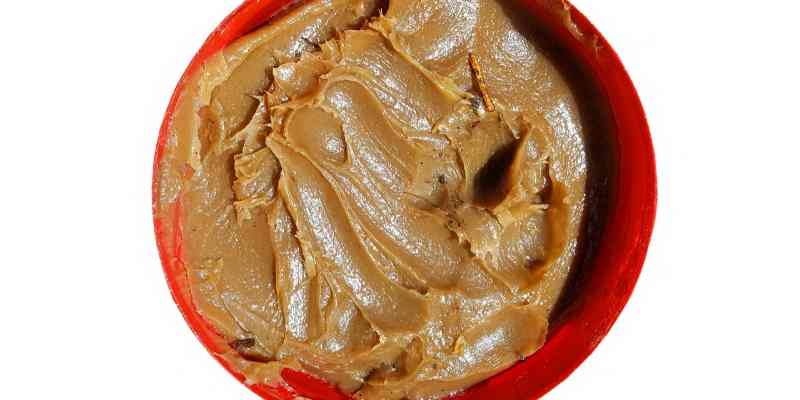You’ve probably heard (or used) Vaseline for yourself. This product is believed to be efficient for us humans for a wide array of conditions, such as dull or tired skin, extreme dryness, or any other recurrent dermatological problems. Still, one might wonder if Vaseline can provide such benefits for a dog’s skin, too. Read on up to learn all you need to know about using Vaseline for dogs.
Are you interested in a particular topic about using Vaseline for dogs? Then check the table of contents below to jump to the most relevant section. And you can always go back by clicking on the black arrow in the right bottom corner of the page. Also, please note that some of the links in this article may be affiliate links. For more details, check the Disclosure section at the bottom of the page.
Here's what we'll cover:
Can I put vaseline on my dog?
Yes, but you won’t necessarily want that.
There are a plethora of options for treating itchy or (mildly) scraped-up dogs that are both safe and non-toxic. To begin with, rather than a salve, an all-natural dog shampoo specifically designed to cure skin issues might be a better place to start.
The shampoo is less appealing to your dog because it’s washed away, not only being unlikely likely licked off, but also delivering a longer-lasting soothing benefit to irritated skin. Other alternatives include organic dog lotions and sprays made with ingredients such as grape seed and avocado oil, honey, and/or oats. But if for some reason you are willing to stick with vaseline (it’s possible) you might want to read on.

How can I use Vaseline on my dog?
Indeed, Vaseline can be harmful to pets if ingested. But you can use it for specific canine conditions and tackling several skin problems. Keep in mind that your dog should not be eating Vaseline (such as half a jar of it) and that licking it after applying it on his skin is a common reaction.
Other than that it can be a great help for various conditions:

Can I put Vaseline on my dog’s paws?

Dog paw pads are designed to be tough. Their purpose is to protect your dog’s joints by absorbing shock. Still, if they become too dehydrated or too cracked, your pet might experience problems walking, feel pain, and even bleeding can happen. If your dog’s paw is damaged too hard, it is best to consider a visit to your vet. As paw’s state is an indication of overall pup’s health. On the other hand, if the pup’s paws are merely dehydrated, Vaseline can turn out to be an excellent at-home remedy.
Here’s how you use it:
First of all, wipe your dog’s paws and dry with a clean cloth. Afterward, apply Vaseline and make sure you massage it well into his paws.
It is best to prevent your dog from licking it, as Vaseline can upset his stomach. To prevent the licking, you can put a bandage on your dog’s paw for a couple of minutes until the product is absorbed. (By the way, if your pup does struggle with any paw issues check our guide on dog paws cleaners and home remedies)

Using Vaseline for dry dog nose

If your dog’s nose is dry and cracked, it might be an outcome of sunburns, allergies, or any other external factors. Keep in mind that if you suspect your dog has an allergic reaction, it is best to consult with a veterinary for addressing such concerns. (And if your pup is a frequent allergy sufferer you might want to check my post about Claritin dosage and use for dogs).
Still, if you simply look for a fast remedy for a dry dog nose, you should use Vaseline. Clean the area gently, and use a small amount of Vaseline to spread around his nose. It is best to apply a little Vaseline as possible to prevent any potential side effects.

Vaseline on dog skin irritations
Irritated and itchy skin can make your dog scratch and lick himself endlessly up until he injures himself. In most situations, such a symptom is an effect of parasites, infections, or allergies. It is one of the most common dogs’ skin conditions, and it can be addressed at home with the aid of Vaseline.
You can apply a small quantity of Vaseline on your dog’s skin topically. But you need to be careful and massage it until it gets absorbed into the skin thoroughly.
Your dog might be prone to lick it, which is why you should do your best to use as little product as possible.
However, if the symptoms don’t decrease in intensity in one to two days, it is best to ask for medical advice. Your dog might have some severe conditions, such as allergies or atopic dermatitis, and only professionals should deal with it.

How to soften dog eye boogers with vaseline?

Dog eye boogers can be a result of allergies, conjunctivitis, dry eyes, and similar conditions. The first step, in this case, is to remove the discharge and clean the area around the eyes. Also, you can use an to prevent your dog from scratching the area for some time. In some situations, moisturizing the area around the eyes can turn out to be useful for dealing with eye boogers.
You can apply a small quantity of Vaseline under your dog’s eyes, which will moisturize the area and prevent further dehydration.
Still, if you observe a change in the color of the eye’s discharge, or severe redness and itchiness, you should make a veterinary appointment. Dog eye discharge can be a sign of a critical condition that can negatively impact your pet’s vision. And it’s better be safe than sorry.

Is Vaseline safe for dogs?
Technically speaking, Vaseline can be used as a topical treatment for dogs, as it is a non-toxic product for pets. Still, it is best to apply to your dog’s skin as little product as possible.
Pet owners should be aware that petroleum jelly is not considered hazardous to dogs, but this does not imply it is completely risk-free. Petroleum jelly’s origins in oil refining have raised some concern among pet owners because of its link to carcinogens. The good news is that the carcinogenic components have been removed, and a little amount should not harm your pet. If he ingests a large quantity of it, he could develop diarrhea and an upset stomach.
If you suspect your dog has ingested too much Vaseline, it is best to go for a vet appointment. Explain your situation, and follow any guidelines suggested by your doc.
Or, in case you want to save money and time better while being efficient in helping your pup with poop problems, you might check online vets.
The decent pet insurance is the one that covers things like accidental food poisoning, which might lead to constipation, averages at about $42.45 as calculated by Valuepenguin in their extensive research. But even still, the median reimbursement level is at 80%. In the end, you have to pay quite a lot for every visit to your doctor. (Although if you still want to look into it here’s the great guide on choosing the best pet insurance).
So, companies like “Just ask” might be a great option in that case. It’s an online support with hundreds of qualified vets on call to help you in a second for a tiny fraction of the cost. So you don’t have to drive anywhere or worry that your doctor is out office.


Is Vaseline toxic to dogs? Are there any side-effects?
Even though it is considered to be a non-toxic product for dogs, ingesting it can cause severe side effects. These include stomach issues, stomach pain, diarrhea, or vomiting. If your dog consumed a great deal of Vaseline, you should contact your vet as soon as possible.

What Are Some Alternatives to Vaseline?
There are several alternatives to using Vaseline on your dog if you’re concerned about the potential hazards.
If your dog’s skin is dry and itchy, you might find that a moisturizing or medicated shampoo works better than any topical ointment. Dog shampoos and conditioners can help to hydrate your dog’s skin while leaving no residue behind that he may eat. If your dog’s skin issues are severe, see your veterinarian about a medicated ointment or try a natural cure like coconut oil or aloe vera. Just make sure you do your homework first so you know it’s okay.
Whether a product is made specifically for dogs or not, you should be cautious about putting it on your dog’s skin. Always check the label carefully to ensure that you’re using the product correctly, and contact your veterinarian if there’s a problem.

Why do dogs like Vaseline?
The unique composition of Vaseline makes it tasty for any pet, especially for dogs. It is a derivative product from the petrol and oil industry that can have similar effects, such as addiction. It can increase a dog’s appetite for food while making his brain perceiving Vaseline as a tasty treat. Some believe that the smell of Vaseline is similar to food fat, which is why it increases cravings in dogs.

Dog ate Vaseline. What should I do?
If your dog ate vaseline but just licked a small quantity of it, he might be safe from side effects. Still, it is recommended to monitor his behavior during the next 48 hours to see if there is any change in his health.
At the same time, if you suspect your dog ingested large quantities of Vaseline, it is best to rush him to the nearest vet hospital. It can have side effects similar to poisoning, which is why your dog will need professional treatment.

Can I use Vaseline on my dog. Summary

Vaseline can be useful for treating some dog conditions related to skin problems. If you apply a small quantity, your dog should be safe from side effects. Also, when applied topically, it is best to find ways to prevent your pet from licking it. In this way, you will deal with his skin problem and avoid any potential side effects.
It’s probably not a good idea to put Vaseline or any other petroleum-based product on your dog. It’s always best to check with your veterinarian if your dog is itchy, flaky, red, or bumpy. There may be a more serious underlying problem, such as food allergies or a parasite infestation. So it’s better to consult your vet to be safe.
Thanks for the blog graphics: Canva.com


